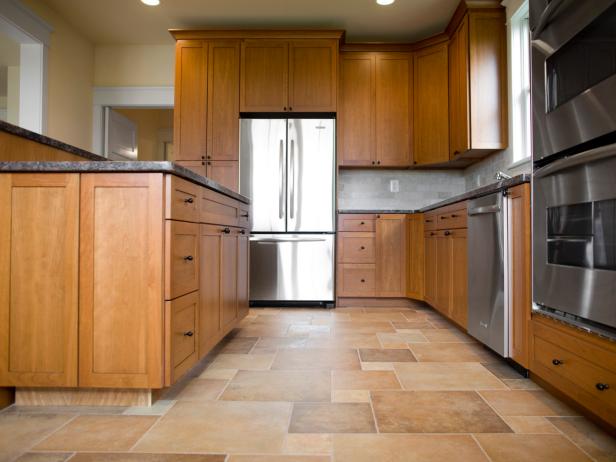Kitchen flooring: the best types of floors for your kitchen
Briefguide to the advantages and disadvantages of each type of flooring: wood, ceramictiles and vinyl among the most popular choice.
Remodelinga kitchen means undertaking a significant endeavor both in terms of economicinvestment and because having work going on the room means it wont befunctional for several weeks. The timeframe can obviously vary depending on thescale of the changes, but usually it is long enough for people to wait untileverything in that kitchen needs to be changed, from furniture to equipment,color of the walls and flooring.
Related
Itis precisely the choice of a type of floor that should be at the base of therestructuration, since it is going to be the most durable and unchanging partof the room, it will greatly influence the possibilities in terms of colorpalette, materials and shapes that better suit the stance.
Moreover,it is important that the kitchen flooring reflects the characteristics of yourhome and that it be able to respond to your familys specific needs sincedifferent types of owners might use the kitchen in different ways, for exampleas a dining room and more or less frequently. For example, if you own a dog youshould consider if a hardwood or a cork floor is really the wiser choice asscratches will greatly affect it and will be visible. On the other hand,working people that do not extensively use their kitchens may be able tomaintain hard wood flooring without problems.
Ingeneral the most popular choice for kitchen flooring is that of tiles,especially ceramic ones. Durable, resistant and easy to clean, they are themost obvious choice if you plan on spending like most families a significantamount of time in the kitchen. The main disadvantages of ceramic tiles are thatdishes and glasses do not stand a chance when slipping from your hands and thatthis type of flooring is not ideal if you plan on standing on it for severalhours a day. It can also be too cold for some during the winter, but this canbe easily solved by choosing terracotta tiles that retain heat during the coldmonths and stay fresh during the summer.
Woodis better for your legs but it is harder to clean and water may enter throughthe surface and create moist problems. This can be helped through coatingtreatments that tend to be enough to keep the wood waterproof and clean.Maintenance requirements are definitely higher than with standard tiles, but ifyou are willing to commit to them, the look of the wooden floor is worth theeffort.
Othermaterials that have become more popular in the field of kitchen flooring in thelast years are bamboo, less expensive and with the look of wood for somevarieties, eco-friendly, light and easily removable in case moist issues shouldarise and vinyl, undoubtedly convenient in terms of price, easy to install andwith many choices for color customization. Vinyl tends to have a shorter usablelife though, an average of around 15 years while ceramic tiles can last a good30 years instead.
Itreally all depends on the use you do of your kitchen, your familys habits andhow long do you need the floor to last. If you like frequently changing dcor,go ahead and try a vinyl flooring at first, there are many varieties whichresemble the look of laminate and tiles. As time goes by you can decide whetherthe choice suits you or if it is worth investing in a more costly but surelymore durable flooring.







0 Response to "Kitchen flooring: the best types of floors for your kitchen"
Post a Comment